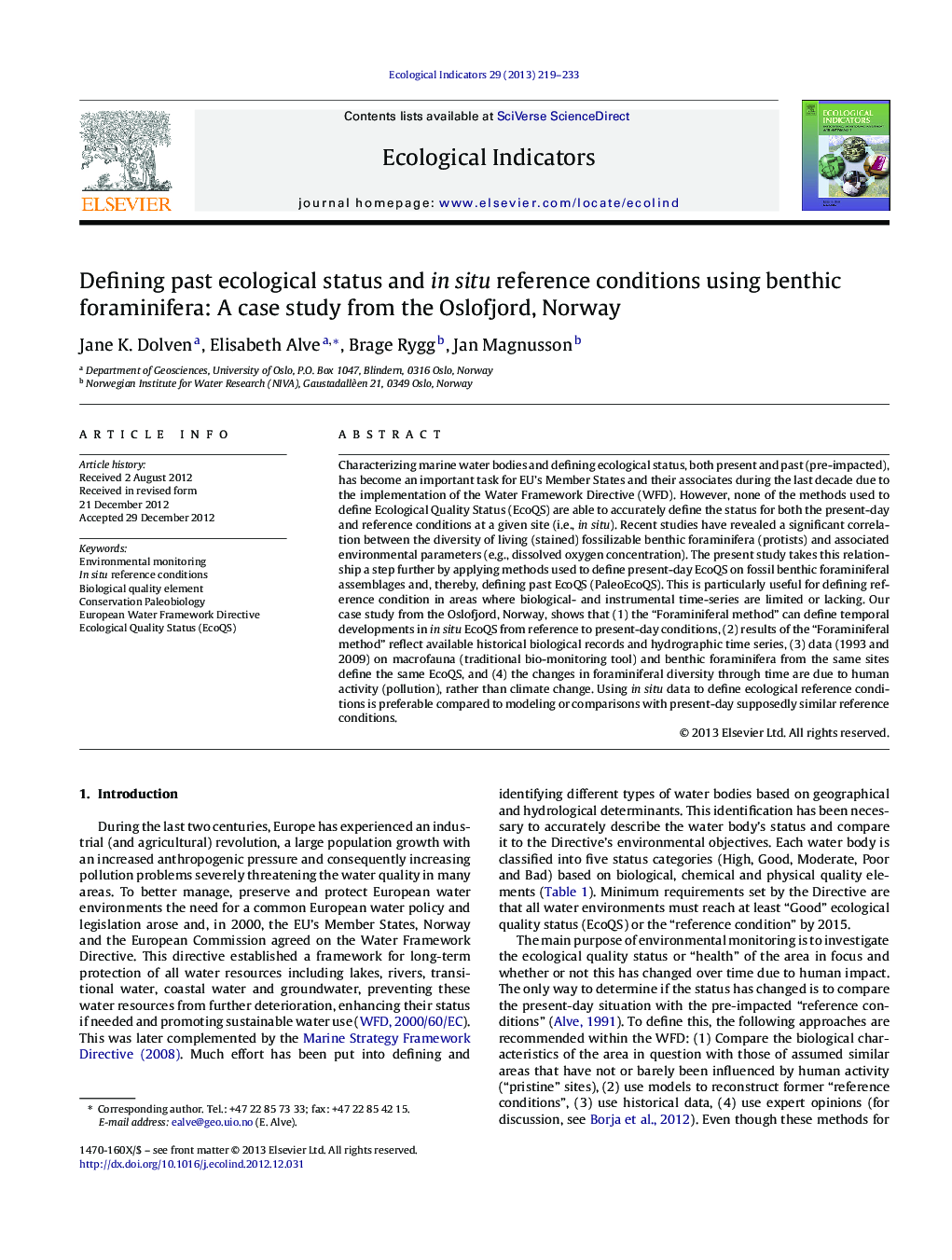| کد مقاله | کد نشریه | سال انتشار | مقاله انگلیسی | نسخه تمام متن |
|---|---|---|---|---|
| 4373480 | 1617171 | 2013 | 15 صفحه PDF | دانلود رایگان |

Characterizing marine water bodies and defining ecological status, both present and past (pre-impacted), has become an important task for EU's Member States and their associates during the last decade due to the implementation of the Water Framework Directive (WFD). However, none of the methods used to define Ecological Quality Status (EcoQS) are able to accurately define the status for both the present-day and reference conditions at a given site (i.e., in situ). Recent studies have revealed a significant correlation between the diversity of living (stained) fossilizable benthic foraminifera (protists) and associated environmental parameters (e.g., dissolved oxygen concentration). The present study takes this relationship a step further by applying methods used to define present-day EcoQS on fossil benthic foraminiferal assemblages and, thereby, defining past EcoQS (PaleoEcoQS). This is particularly useful for defining reference condition in areas where biological- and instrumental time-series are limited or lacking. Our case study from the Oslofjord, Norway, shows that (1) the “Foraminiferal method” can define temporal developments in in situ EcoQS from reference to present-day conditions, (2) results of the “Foraminiferal method” reflect available historical biological records and hydrographic time series, (3) data (1993 and 2009) on macrofauna (traditional bio-monitoring tool) and benthic foraminifera from the same sites define the same EcoQS, and (4) the changes in foraminiferal diversity through time are due to human activity (pollution), rather than climate change. Using in situ data to define ecological reference conditions is preferable compared to modeling or comparisons with present-day supposedly similar reference conditions.
► Benthic foraminifera defines present and past ecological quality status (EcoQS).
► The “Foraminiferal method” reflects biological and hydrographic time series.
► The method defines in situ reference conditions beyond instrumental time-series.
► Defines in situ reference conditions irrespective of historical data availability.
Journal: Ecological Indicators - Volume 29, June 2013, Pages 219–233